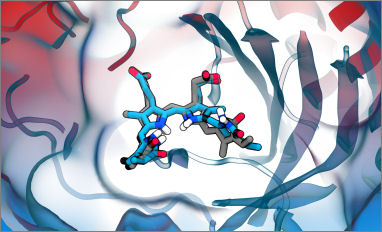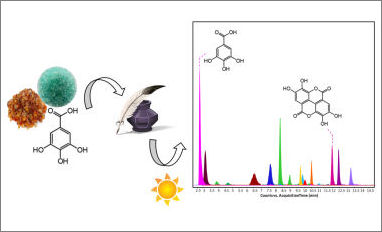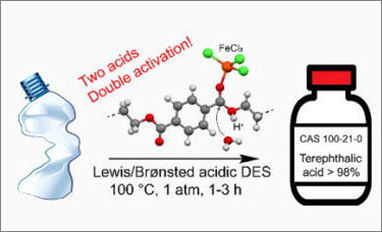
 Phytochromes are ubiquitous photoreceptors responsible for sensing light in plants, fungi and bacteria. Their photoactivation is initiated by the photoisomerization of an embedded chromophore, triggering large conformational changes in the protein. Despite numerous experimental and computational studies, a lot of questions remain unanswered: what happens to the chromophore just after light absorption? How does the environment affect the entire activation process?
Phytochromes are ubiquitous photoreceptors responsible for sensing light in plants, fungi and bacteria. Their photoactivation is initiated by the photoisomerization of an embedded chromophore, triggering large conformational changes in the protein. Despite numerous experimental and computational studies, a lot of questions remain unanswered: what happens to the chromophore just after light absorption? How does the environment affect the entire activation process?
 Congratulations to our PhD student Adele Ferretti for her publication entitled "A model iron gall ink: an indepth study of ageing processes involving gallic acid". Iron gall inks have been among the most used writing materials, thus representing an important element of historical and artistic heritage of our society. Conversely, many conservation issues arise from the presence of iron gall inks in manuscripts and drawings, as a conspicuous fading of the text and paper acidification and degradation.
Congratulations to our PhD student Adele Ferretti for her publication entitled "A model iron gall ink: an indepth study of ageing processes involving gallic acid". Iron gall inks have been among the most used writing materials, thus representing an important element of historical and artistic heritage of our society. Conversely, many conservation issues arise from the presence of iron gall inks in manuscripts and drawings, as a conspicuous fading of the text and paper acidification and degradation.
 Congratulations to our Ph.D. student Elisabetta Rosadoni for her publication "Ligandless Palladium-Catalyzed Direct C-5 Arylation of Azoles Promoted by Benzoic Acid in Anisole" on Molecules. In this paper we report a selective C-5 arylation procedure involving anisole as an EHS green reaction solvent. In addition, the beneficial role of benzoic acid in this reaction as an additive is also highlighted. The palladium-catalyzed direct arylation of azoles with (hetero)aryl halides is nowadays one of the most versatile and efficient procedures for the selective synthesis of heterobiaryls.
Congratulations to our Ph.D. student Elisabetta Rosadoni for her publication "Ligandless Palladium-Catalyzed Direct C-5 Arylation of Azoles Promoted by Benzoic Acid in Anisole" on Molecules. In this paper we report a selective C-5 arylation procedure involving anisole as an EHS green reaction solvent. In addition, the beneficial role of benzoic acid in this reaction as an additive is also highlighted. The palladium-catalyzed direct arylation of azoles with (hetero)aryl halides is nowadays one of the most versatile and efficient procedures for the selective synthesis of heterobiaryls.
 Congratulations to our Ph.D. student Marco Rollo for his scientific publication entitled "Depolymerization of polyethylene terephthalate (PET) under mild conditions by Lewis/Brønsted acidic deep eutectic solvents" in Chemical Engineering Journal. Bifunctional Lewis/Brønsted acidic DESs composed of FeCl3⋅6H2O, cheap and scarcely toxic, in combination with a variety of acids, both mineral and organic, have been prepared for PET depolymerization. LBDES formed with methanesulfonic acid and para-toluenesulfonic acid are capable of quantitatively depolymerizing PET under mild conditions, with a temperature of 100 °C and a reaction time of 1 h, affording high purity terephthalic acid in high yield.
Congratulations to our Ph.D. student Marco Rollo for his scientific publication entitled "Depolymerization of polyethylene terephthalate (PET) under mild conditions by Lewis/Brønsted acidic deep eutectic solvents" in Chemical Engineering Journal. Bifunctional Lewis/Brønsted acidic DESs composed of FeCl3⋅6H2O, cheap and scarcely toxic, in combination with a variety of acids, both mineral and organic, have been prepared for PET depolymerization. LBDES formed with methanesulfonic acid and para-toluenesulfonic acid are capable of quantitatively depolymerizing PET under mild conditions, with a temperature of 100 °C and a reaction time of 1 h, affording high purity terephthalic acid in high yield.



